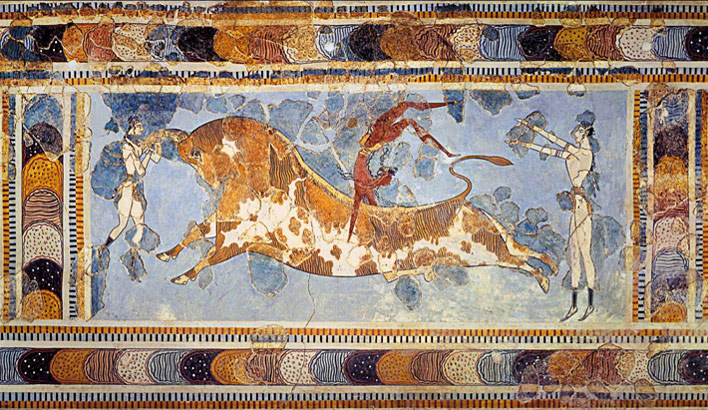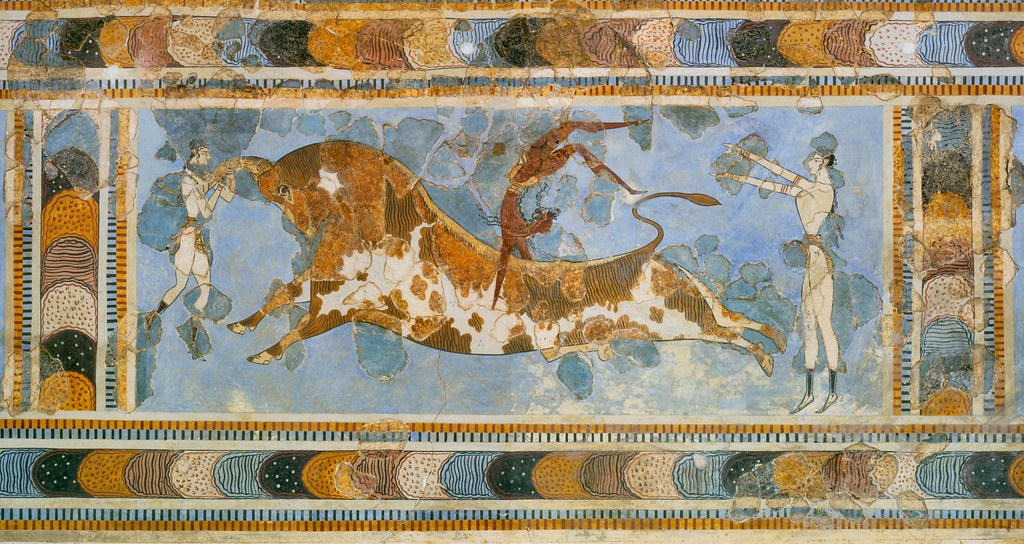
Aegean Neolithic and Bronze Age Civilizations:
The Cycladic Civilization Circa 3300 to 1100 BCE
The beginnings of a material culture in Greece took shape in a cluster of 30 small Aegean islands in the Neolithic and early Bronze Ages. Together they are known as the Cyclades, from the archaic Greek word kyklos, meaning “cycle.”
More than 30 small islands form an approximate circle around the central and most sacred island, Delos, which would become an important holy place for Ionian Greeks. Together they are known as the Cyclades, from the archaic Greek word kyklos, “cycle.”

Settlements have been located that date from as early as 5000 BCE, by people thought to have come from Caria in southwestern Anatolia (Turkey). Natural resources such as obsidian (volcanic glass), which they exported throughout the Aegean as a cutting tool, and later exports of lead, copper and marble enabled the islands to flourish during the Bronze Age.
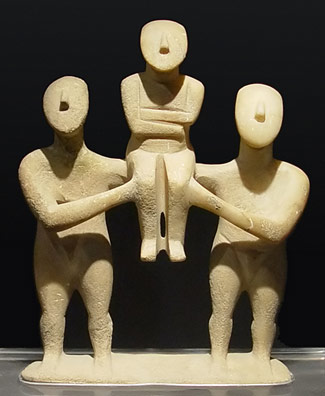
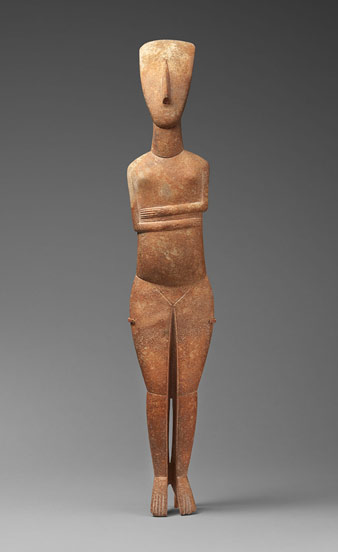
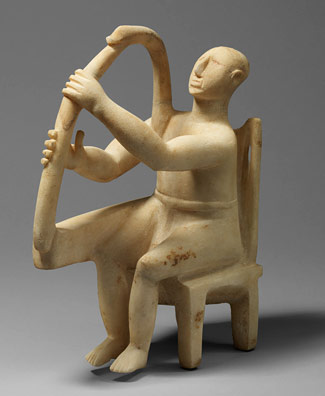
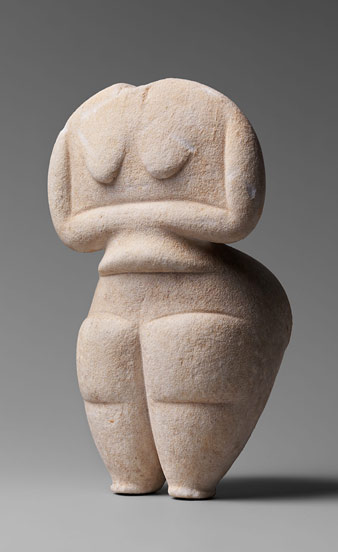
Cycladic marble figurines 4500–2000 BCE.
During the early part of the Greek Bronze Age (3200–1500 BCE), the people of the Cyclades produced hundreds of wonderfully unique marble figures and figurines now identified as “the Cyclades.” They have been found in a variety of sizes and types, scattered about the Aegean. However, since we have no written records, we know very little about them. Probably because the vast majority are stylized female figures, scholars have speculated that they represented goddesses of nature and fertility. They were regularly buried with the dead irrespective of the deceased gender.
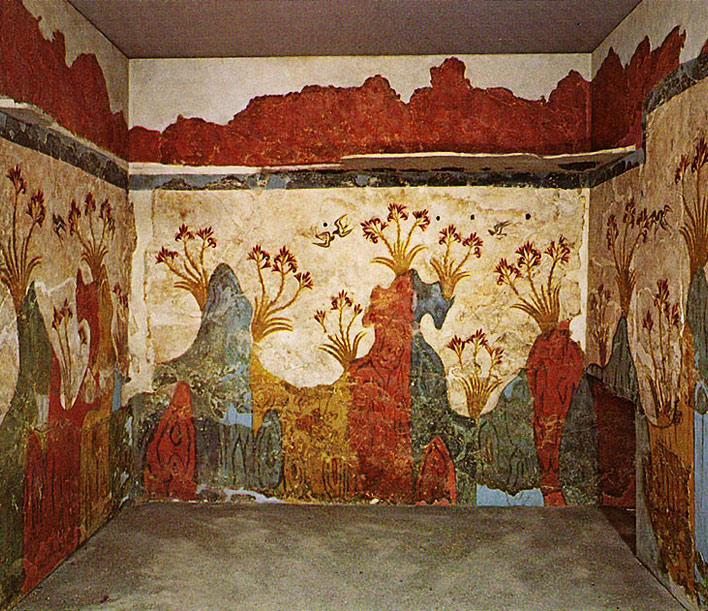
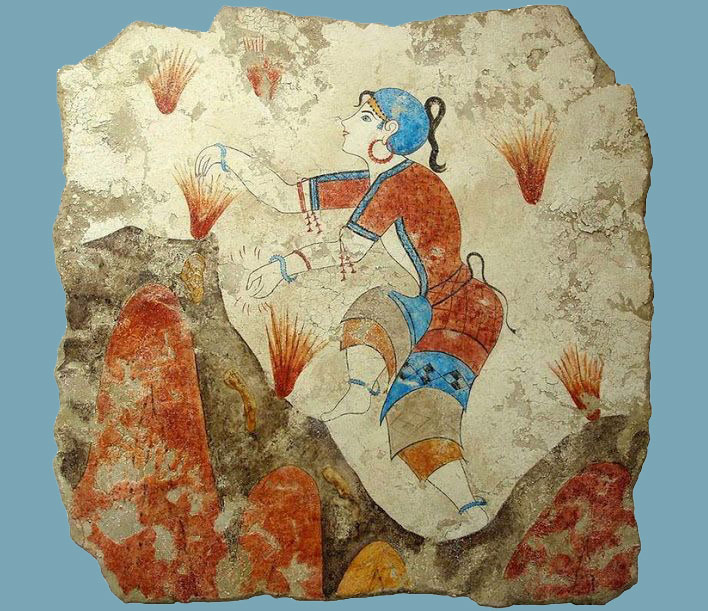
So successful were the Minoans at trade, that from about 2200 BCE and by the late Bronze Age (ca 1700–1000 BCE), all the Aegean islands, including the Cyclades, were dominated by Minoan culture—their pottery, architecture and frescoes are all remarkably similar. An excellent example is the settlement of Akrotiri on the Cycladic island of Thera (modern Santorini). Luckily for us, volcanic ash preserved the city remarkably well until it was discovered by Spyridon Marinatos in 1967.
The Cycladic civilization came to an end when, after several earthquakes, the Thera volcano of 1628 BCE erupted, totally destroying the island of Thera and leaving the surrounding islands almost completely destroyed from the tsunami waves that followed.

